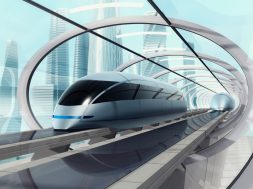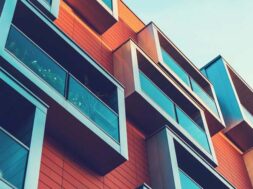According to Dr. BS Bhooshan, “Sustainability, with a plethora of definitions and interpretations is a notion concerned with leaving the world for future generations, unchanged ecologically as we inherited”
The idea of sustainable construction, whatever that term conjures up, moved from the concerns of a few a decades ago to a large media mantra today. From passion it has moved to fashion. As the momentum gains, the various shades of green emerge. In this article, the author has discussed some aspects of sustainable construction and the impracticality of achieving anything near it without major changes, not only in the construction sector, but in the whole societal goals of good living. Every idea reflects a political structure behind that to emerge as a social practice. Also, though small actions do become significant together, they can impact significantly only if the individual cases become scalable and multipliable. Otherwise, it only remains as personal achievement; a case of demonstration. Are we having clear options today?
Green (sustainable) Construction Sustainability, with a plethora of definitions and interpretations, is a notion concerned with leaving the world for future generations, unchanged ecologically as we inherited. It means that any human activity is environmentally sustainable only when it can be performed or maintained indefinitely without depleting natural resources or degrading the natural environment.
The latest measure of the sustainability of an activity, say construction, is the carbon footprint that is the measure given to the amount of green house gases produced by burning fossil fuels, measured in units of carbon dioxide (i.e. kg). An isolated activity could, perhaps, achieve a totally sustainable desirable zero carbon footprint, but to achieve it on a large scale or global scale is a utopian dream at least in the present scenario. The whole question is how we move to that goal and what technical and managerial and societal requirements are to be evolved. That requires concerted effort of all societies as we know as the whole world is interdependent ecologically. Global warming, the ultimate catastrophe will affect everyone. Will it affect equally? No one knows for sure, but the indications are that the countries on tropical belt will be affected most. Even within the countries there would be great differences. A kernel of politics is already there.The Larger DebateThere is no mathematical magic formula, as there is no full agreement on the approach to the idea of sustainability. The sustainability question hinges on the political ideology and approaches depend on the very idea of human development itself. The debate finds many positions and mutually exclusive arguments. At one extreme we have economics based approaches (some hinging on market economy solutions and corporate enthusiasm and some Neo-Marxist approaches which emphasise the question of equity as a base for any sustainable ecologic society) and the other, the deep environmentalists or culture critics, who find any economics based development anti-environmental.
The first approach does not question, rather it abets and welcomes, concentrated development of larger cities, which are the so called engines of growth, large-scale infrastructural developments and industries needed for fast growth, all propelled through the firing of the insatiable demands of consumption as the basis of development. The approach further tries to assuage the negative impact on environment by pinning hope on marketable technological innovations and incentives like rating systems. Reformists would appeal to the good senses of corporate governments and to States to take a lead role in that. Apparent alibis of high land value, labels like green and affordability are freely used.
However, it is becoming immanent that there is not enough in this earth to continue forever of unbridled growth with so called standards of living and demands of consumption always on the increase. No great technologic development in the near future is visible so that everyone can aspire for an increased consumption without seriously jeopardising the world’s ecology. This means that either the consumption of everyone has to reduce or consumption of many are to be kept at low levels so that some could continue to have higher levels of it, the average thus remaining low. This though not an acceptable agenda, uses the impending global catastrophe as a Frankenstein to be used to intimidate and continue the status quo. Theoretically, the market economy seems to have no lasting solution at all. The Neo-Marxian proposition neither has any except the slogan that decentralised development and activities and projects aimed at local level actions and empowerment of lower strata. The claim is that this would somehow lead to more sustainable situation. Only a modicum of sustainability and a large hype of publicity and self gratification are achieved by overtly accepting an agenda of seeming reduction of the ecologic impact.
For advocates of market economics green has to be achieved in the present day economic theories and policies, but with more controls and investment in green practices. The slogan is: “Green makes good business sense”. Real estate development and profit based private initiative becomes mantra in built environment. Consume more is advocated, not less. Consumption is almost deified. This is largely done through the advocacy made swiftly and surreptitiously through media and other means by corporate think tanks. Arguments against corporate approach are subverted absorbed by clothing them the environmental ‘lingua’. One has to be doubtful about the efficacy of this in the long run as we have no way to know the real intentions.
For the deep environmentalists, the idea of growth (with basic idea of promotion of consumerism and consumption and market economics in place) and that of a green development seems mutually exclusive. The deep ecologists focus primarily on nature, not culture. The answer as suggested by radical environmentalists is a return to appropriate technologies, to craft level productions and eulogise tribal culture. To some environmental architects, this means reducing architecture to materials of natural origin or mud based and almost a negation of contemporary technologies. So, we have agro-waste products and bio-waste products, stabilised mud, water recycling at small scales, etc. This is more a moralising and demonstration stand than offering any market or management mechanism and the success depends wholly on upholding the activist path. This approach as a variant that most of the environment-friendly built environmentalists follow has great limitation that it offers no scalable solution
Considering the gravity and political fallout of various approaches, an informed public debate not within the academia or professional groups alone, but in the political realm seem necessary. We may need a revolution in the construction sector and its politics and economics. Is it a tall order?
Greener ConstructionThe above discussion only augments the idea that there is no one sure shot approach. Having considered the politico economic and multi dimensional complexity of sustainability one legitimately wonders about our role as building professionals. Certainly, our impact may be small, yet within the limits, can we do anything?
When we are talking of green built environment or architecture, we should distinguish between initial capital carbon footprint (or embedded energy) and continued carbon footprint (it could be a positive contribution as well hypothetically) within the concept of life-cycle of buildings. Design involves both. There are many ways one can deal with minimising continued footprint by improving gadgets, design with climate, passive solar or wind energies, waste recycling etc. But lifestyle is the key for reducing continued damage; living with nature. India has been living with nature; but often in sub optimal subsistence level. Can we do it better? We can.
Initial capital carbon footprint or ICCF (damage done during construction) will continue to be a major challenge. Methodology of evaluation and practicality of assessment is a major hurdle. In coming years more efforts will probably be directed towards measuring and reducing the amount of embodied energy and ICCF in new buildings.
However, given all these complexities, it is possible to reduce the damage if we know the material options and consider the probable relative embedded energies in them. And relative impacts on the environment. Without compromising structural durability, indoor pollutant levels, ventilation, building code requirements, or marketability, the principle of 5R’ s of sound design, construction and commissioning apply here.
The 5 Rs are: Reduce: Lower quantities of building materials, resources, and embodied energy are used. Can we build less?Reuse: Construction materials are reused where practical and structurally sound and buildings themselves can be reused.Recycle: Recycled materials are used, and building is designed for recyclability. Renew: Energy from natural sources and renewable building materials are emphasised. Respect: Respect the earth, respect the users.
Amongst these, the main R is REDUCE, for various reasons. It cannot be adequately stressed given the current situation. It hinges on the whole lifestyle of people, collective and individual.
Questions like, is this project necessary? Why do we want it? Can we reduce the building programme? Is the brief justified? Is the project itself downsized? – should be asked in the first place, though nobody in the industry want to ask, or many clients. When the society is driven by a market oriented capitalist growth mode, only concerns of ethics can make these questions asked. But ethics of today is not to consume less. Most of our building programmes are either over ambitious or downright unnecessary. We don’t even ask if we can postpone consumption and building to a later date, except for financial reasons.
A possible scenarioHaving said this it is important to look at our infrastructural and building programmes from the perspective of sustainable cities. This idea should look at the whole system of cities and human habitat, a system of cities and settlements as part of an ecological system. Making large city sustainable is not a solution, but avoiding such large cities is. Sustainable flyover is not the solution, but avoiding the need of it is. If we look in this way, the whole scenario has to be rewritten upside down. Metro city centred real estate sector and the power lobby who feeds on this would militate against any idea like this. Decentralised small and intermediate town based development hinging on a networking solution where agriculture and urban development can (agropolitan) go hand in hand, where we look for solutions in reducing the need for mass transit rather than finding solutions for mass transit. In such a reduced consumption scenario, which need not mean we live in hunger or go back to 19th Century or lower standards, but organise ourselves differently. The sustainability should be a multilevel action starting at international national levels and down to local levels. If pricing mechanisms take environmental costs of production properly and that leads to a different economic restructuring, then ecology becomes the primary basis of organising human settlements and regions and centralising tendencies would be curtailed. The primary role of research is on finding ways to decentralise economic activities with more efficiency and devising technologies for that.
Dr. B. Shashi Bhooshan practices architecture in Bangalore and Mysore since 1987. He taught at the University of Mysore earlier and was a consultant to UN and was associated with IIED, London. With many awards, his architectural projects are widely published. He guides doctoral students at CEPT and MAHE Universities.
Cookie Consent
We use cookies to personalize your experience. By continuing to visit this website you agree to our Terms & Conditions, Privacy Policy and Cookie Policy.









